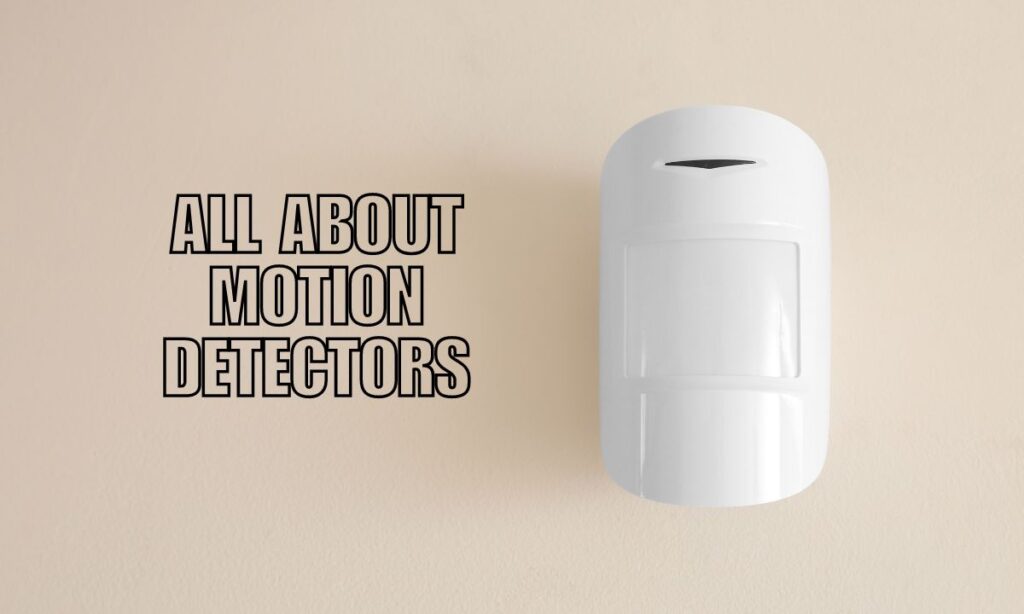Motion detectors, the unsung heroes of security systems and energy-efficient lighting, play a crucial role in our daily lives. In this comprehensive guide, we’ll explore the ins and outs of these silent guardians, from their basic functionalities to the intricate technologies that make them tick.
What is a Motion Detector?
At its core, a motion detector is a specialized device designed to detect movement within its designated area. These devices are commonly used in security systems, lighting controls, and even automation processes. Imagine a watchful guardian that springs to life the moment anything moves in its vicinity—it’s like having a personal detective for your home or office space.
What Does a Motion Detector Do?
The primary purpose of a motion detector is to identify changes in its surroundings. When it senses movement, it triggers a response, which could be activating lights, sounding an alarm, or even sending notifications to your smartphone. Essentially, it acts as an extra set of eyes, diligently watching for any unexpected activity.

How Does a Motion Detector Work?
Motion detectors employ various technologies to accomplish their mission of detection. Let’s delve into the fascinating world of sensor technology:
Sensor Technology
Passive Infrared (PIR)
PIR motion detectors work by detecting infrared radiation emitted by warm objects, such as humans or animals. When a warm object moves across the sensor’s field of view, it triggers the detector to activate. PIR technology is widely used in home security systems due to its reliability and cost-effectiveness.
Microwave
Microwave motion detectors emit microwave pulses and analyze the reflections. Any movement within the detection area alters the reflections, prompting the sensor to react. These detectors are suitable for large open spaces and are less susceptible to false alarms caused by environmental factors.
Ultrasonic
Ultrasonic motion detectors use high-frequency sound waves to detect movement. When an object disrupts the ultrasonic waves, the sensor detects the change and initiates the programmed response. These detectors are often used in indoor spaces and are sensitive to subtle movements.
Tomographic Motion Detector
This advanced technology uses radio waves to create a 3D image of the monitored area. Changes in this image trigger the motion detector, making it highly effective in complex environments where traditional sensors may struggle.
Video Camera Software
With the rise of smart home technology, motion detection is often integrated into video camera software. These systems analyze video feeds and identify movement, providing a visual confirmation of detected activity.
Gesture Detector
Gesture detection takes motion sensing to the next level. It interprets specific gestures, allowing for hands-free control of devices. This technology is commonly found in gaming consoles and smart TVs.
Dual-Technology Motion Detectors
To enhance reliability and reduce false alarms, some motion detectors combine two or more technologies. For instance, a dual-technology detector might pair PIR with microwave sensing, ensuring a more accurate and robust detection system.
Advantages and Disadvantages of Motion Detectors
Like any technology, motion detectors have their pros and cons. Let’s weigh them out:
Advantages
- Enhanced Security: Motion detectors are integral to modern security systems, providing an added layer of protection.
- Energy Efficiency: In lighting control applications, motion detectors help conserve energy by activating lights only when needed.
- Automation: Motion detectors play a key role in home automation, enabling hands-free control of various devices.
Disadvantages
- False Alarms: Environmental factors, such as moving foliage or pets, can trigger false alarms.
- Limited Range: The detection range of motion detectors varies, and in some cases, it may not cover large areas effectively.
How Far Can a Motion Detector Detect?
The detection range of a motion detector depends on its technology and design. While some detectors are designed for short-range applications, others can cover larger areas. It’s crucial to choose a detector with the appropriate range for your specific needs.
How to Install Motion Detector Light
Installing a motion detector light can enhance both security and energy efficiency. Here’s a quick guide to help you get started:
- Choose the Right Location: Install the motion detector light in a position that provides optimal coverage of the area you want to monitor.
- Adjust the Settings: Most motion detector lights come with adjustable settings for sensitivity and duration. Customize these settings to suit your preferences.
- Power Off: Before installation, turn off the power to the area where you’ll be working to ensure safety.
- Mount the Light: Follow the manufacturer’s instructions to mount the motion detector light securely.
- Connect Wiring: Carefully connect the wiring according to the provided instructions. If you’re unsure, it’s always best to consult a professional electrician.
- Test the System: After installation, conduct a thorough test to ensure that the motion detector light functions as intended.
Conclusion
Motion detectors, with their ability to sense and respond to movement, have become indispensable in various aspects of our lives. Whether safeguarding our homes or optimizing energy usage, these silent guardians play a crucial role in modern technology. As technology continues to advance, we can expect even more innovative developments in the world of motion detectors, making our lives safer, smarter, and more efficient. Contact Callaway Security for more!









